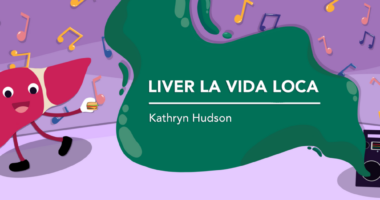First patient dosed in Phase 3 trial of hepatitis C combination therapy
Bemnifosbuvir-ruzasvir treatment designed to block virus' growth, replication

The first participant has been dosed in a Phase 3 clinical trial testing Atea Pharmaceuticals’ combination therapy bemnifosbuvir and ruzasvir in adults with chronic hepatitis C.
The study, dubbed C-BEYOND (NCT06868264), seeks to recruit about 800 patients who’ve not yet received any hepatitis C antiviral treatment at sites in the U.S. and Canada. Enrollment is already up and running at 11 U.S. sites.
Atea also plans a parallel, global Phase 3 trial, called C-FORWARD to take place outside North America. Both studies will test the combination against the approved hepatitis C treatment Epclusa (sofosbuvir/velpatasvir).
“Dosing the first patient in our global Phase 3 program is a major advancement as we work to deliver a differentiated, next-generation therapy for [hepatitis C],” Jean-Pierre Sommadossi, PhD, CEO and founder of Atea, said in a company press release.
Hepatitis C is a liver infection caused by the hepatitis C virus (HCV). In some people, HCV causes a chronic, long-lasting infection that can set the stage for serious liver problems including irreversible scarring (cirrhosis), liver failure, and cancer. Fifty million people worldwide and up to 4 million in the U.S. are estimated to be infected with HCV, which is the number one cause of liver cancer in the U.S., Europe, and Japan, according to Atea.
“The unrelenting high rate of HCV infections in the U.S. is outpacing treatment rates and underscores the need for a new therapy that better addresses the current needs of both patients and prescribers,” Sommadossi said. “Untreated chronic HCV can have a profound impact on patients’ lives, as well as the associated healthcare hospitalization costs, as the disease progresses.”
‘Best-in-class potential’
Bemnifosbuvir and ruzasvir, taken as tablets once daily, is a combination treatment designed to block HCV’s ability to grow and replicate in liver cells. It works similarly to available antiviral treatments for hepatitis C, but is expected to be faster and more convenient for patients.
“We believe our regimen, which combines key features of short treatment duration, low risk for drug-drug interactions, and convenience with no food effect, if successfully developed, has best-in-class potential and the opportunity to improve patient outcomes and to expand the number of patients treated,” Sommadossi said.
Participants in C-BEYOND and C-FORWARD will be randomly assigned to daily treatment with either bemnifosbuvir plus ruzasvir or Epclusa. For patients without cirrhosis, bemnifosbuvir and ruzasvir treatment will last eight weeks while Epclusa treatment will last 12 weeks. Both treatments will be given for 12 weeks for those with compensated cirrhosis, meaning the liver is able to function despite cirrhosis.
The main goal of both trials is to evaluate the proportion of patients who have no HCV genetic material detectable in their blood after about six months, which will reflect sustained responses 12 weeks after completing treatment.
Data from an earlier Phase 2 study (NCT05904470) showed nearly all patients had undetectable HCV following bemnifosbuvir and ruzasvir treatment.
C-BEYOND and C-FORWARD participants will know which treatment they are receiving due to obvious differences in packaging and duration, but “Atea has put measures and processes in place that are designed to blind Atea personnel to patient treatment assignments,” the release states. This should reduce the risk of bias when analyzing data from each trial.
Atea has also launched a Phase 1 study (NCT06911320) to assess the combination’s safety and pharmacokinetics, or movement into, through, and out of the body, in up to 28 adults with either normal or impaired kidney or liver function. The study, to be conducted at least in the U.S., has not yet begun recruiting patients.







